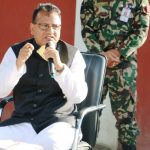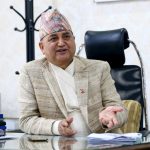27 August. KATHMANDU: Power Summit 2013, a mega event being participated by more than 500 national and international delegates, started in Kathmandu on Monday, with President Ram Baran Yadav calling on Nepal, China and India to bridge trust deficit for the development of the country’s hydropower sector.
“Development of the hydro sector is key to development of Nepal. We, therefore, need to work with each other and trust each other to reap maximum benefit,” President Yadav said in the inauguration session of the two-day summit organised by the Independent Power Producers Association Nepal with the support of PTC India Ltd and Non-Resident Nepalis Association.
The president, however, acknowledged Nepal was lagging behind in the hydro sector development because of political instability. “If there is stability in the country other countries will definitely help us harness power,” he said, as he threw support for “integration of power markets” of Nepal, China and India “for the benefit of everyone in the region”.
Although Nepal has a potential of producing 83,000MW of hydroelectricity from its rivers, the country so far has been able to tap less than 800 MW of that. As a result, hours-long power outage has become a norm in the country. affecting production at various industries and hindering country’s economic development.
Charge-d-affaire at the Indian Embassy in Nepal Jaideep Mazumdar said: “We have answers to most of the questions on production and development of hydropower in Nepal, except for ‘when’. Once that question is answered, Nepal’s economic development is assured.”
Delegates like ambassador of Norway to Nepal Alf Arne Ramslien, however, blamed political meddling for delay in development of hydropower projects in Nepal and asked the government, the private sector and other concerned to undertake reform as a joint venture.
Present at the summit were finance minister Shanker Prasad Koirala, energy minister Uma Kant Jha and Chinese ambassador to Nepal Wu Chuntai.
One primary goal of the summit is to critically review the performance of the domestic hydropower sector, discuss hurdles preventing the sector’s development and identify ways to quicken the pace of the sector’s development.





